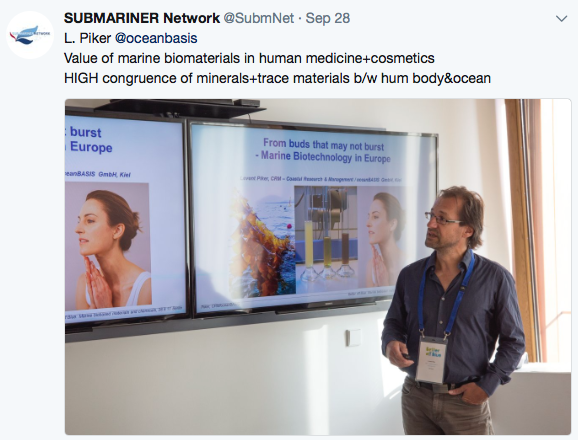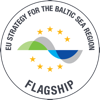Deniz Tasdemir of GEOMAR Helmholtz Centre for Ocean Research Kiel, the challenges and the important steps towards exploiting the potential of marine biomaterials. In R&D, most of the interesting molecules are produced by marine microbes and not macroorganisms. New approaches are necessary to increase cultivability (1%) of microorganisms and to enhance the expression of silent gene clusters to increase chemical diversity. Researchers are currently aiming to enlighten chemical dark matters by application of novel, efficient computational approaches for dereplication of natural products in complex mixtures, in combination with classical de-replication work. In product development, the main challenge is the very long and expensive process for products to reach the market (especially pharmaceutical products).
There are several important steps that can be taken to address these challenges. Innovation approaches and manipulation (biotechnology) is often needed for discovering new, functional molecules for applications. We must also understand the needs for development of new compounds to the market (e.g. pharmaceuticals). Furthermore, the protection of the IP rights crucial. A system must be developed to match infrastructure and expertise to existing needs. And finally, clustering activities (i.e. networks) are important tools.

Levent Piker (CEO of CRM/Oceanbasis GmbH Kiel, Germany) underlined the great chances presented by the market for marine biobased products. The marine environment is a great resource for biobased products: US dollars 563 billion – 2.69 trillion for anticancer drugs of marine origin (Erwin et al 2010). Algae/seaweeds are known to contain many active ingredients and are being actively explored. Demands and trends towards biobased products are particularly strong in the areas of prevention, diet and healthy living. Patents are currently divided by two, if there is a public partner. However, the sector faces some significant challenges. Small companies often lack money to follow big projects, especially in pharma. Changes in the types of authorisation for certain products and the consequences for certification of these products can be challenging, as can accumulating the money needed to get them to the market (e.g. Collagen from a marine invertebrate turns from a medical device into a therapeutic agent). The key is finding potential partners or even investors. Important steps to strengthening the market for marine biomaterials establishing: a systematic approach, smart management, consistent IP regulations (currently based on trust among the involved partners, only in later stages NDAs/ contracts). A balance must be carefully maintained between manipulation of the environment and sustainability, especially where certified and sustainable harvest of mariner biomaterials is concerned.

Hörður G. Kristinsson of Matís ltd. – an Icelandic Food and Biotech R&D company – presented the company’s approach to R&D, focusing on food and biotechnology. Bioeconomy has been identified and is treated as a newly arising market, for example in the fields of: sports nutrition, consumer healthcare, prevention (linked to growing risk factors). There is a high demand in biobased ingredients. The key for biobased industries is their capacity to add value, rather than keeping to the supply of raw materials. Increasing value involves using the raw ingredient, developing it into refined ingredients and in some cases directly into a finished product. Problems and challenges currently faced by businesses in the bioeconomy include the inefficient value chain of fisheries: fish discards at sea are about 8% of the catch and waste during fish production accounts for another 35%.
There are several important steps that can be taken to overcome difficulties. The key is to focus on value addition at different stages of the value chain, i.e.: to minimize the waste in the value chain in a research/knowledge-based way; to use side (or by-) products efficiently, e.g. fish proteins for food products, enzymes for breakdown of macromolecules (e.g. chitosan), hydrolysed fish peptides, fish skin. It is also important to smartly couple different bioeconomic branches, e.g.: in microalgae cultivation: couple cultivation site to geothermal energy plant.

Fredrik Gröndahl of the Royal Institute of Technology Stockholm, Sweden, described some of the challenges in the field of macroalgae farming. A holistic approach (such as the one demonstrated by the Seafarm project) is needed. A key part of ecosystem services is the sustainability assessment. The smart combination of high value compounds enables farmers to better exploit the crop. Furthermore, it is key to raise public perception of biobased materials for consumption (in this case, sugar kelp) – an effort which has been on-going in Sweden and has already had good effects with top restauranteurs offering seaweed on their menus.
Workshop's presentations:
Tags: event, conference, SUBMARINER Network, Baltic Sea Region, Germany, Blue Biotechnology



